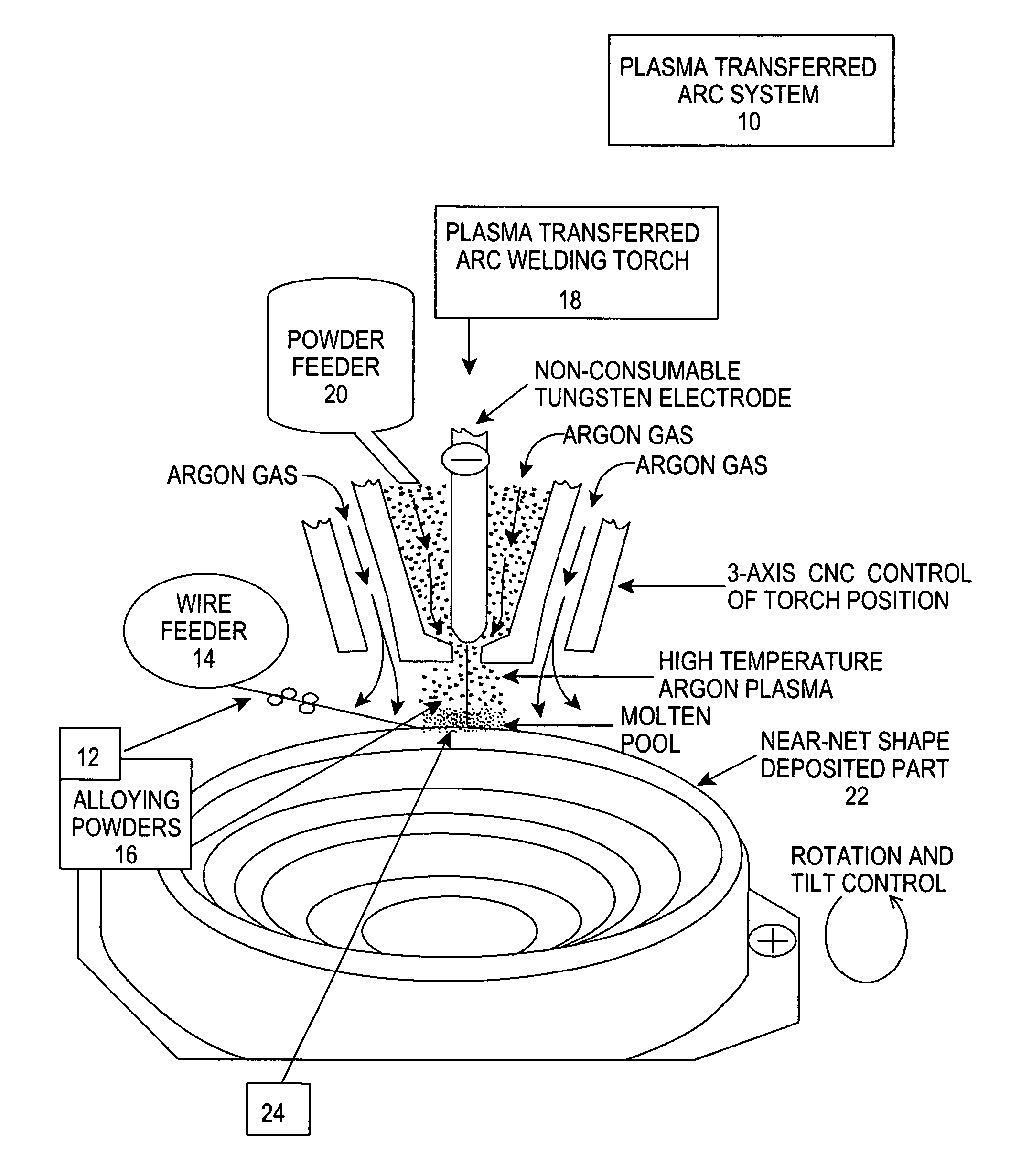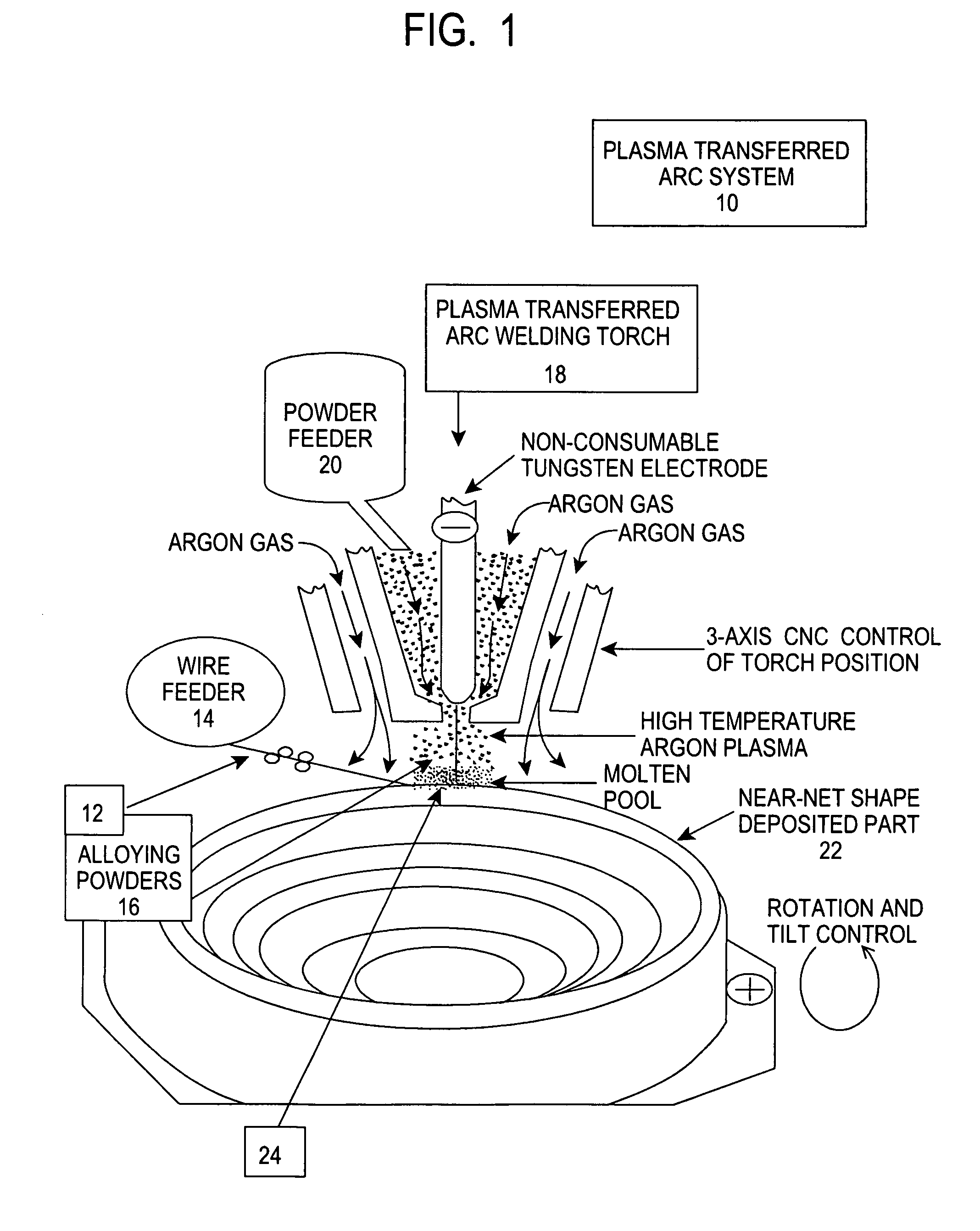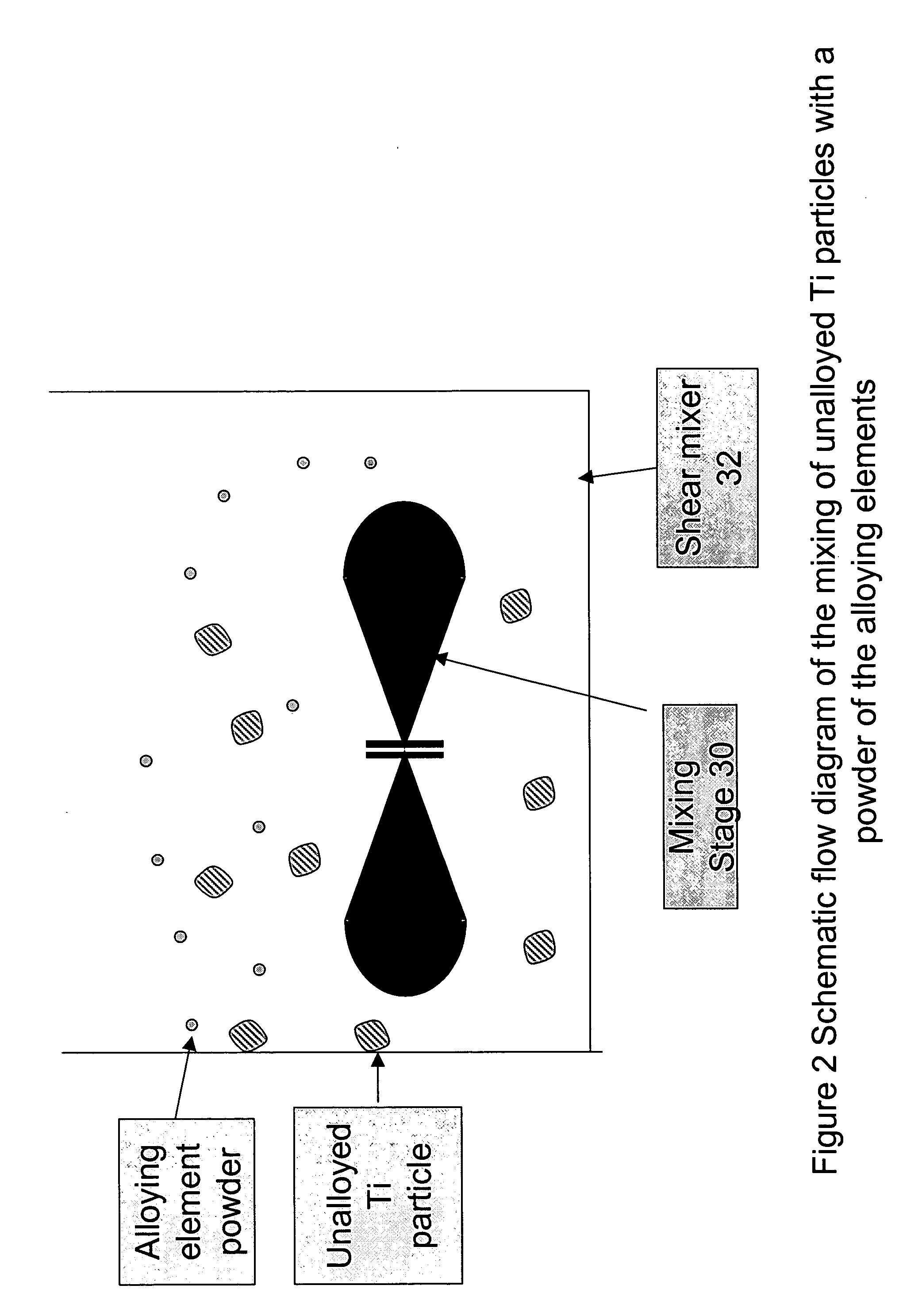Low cost process for the manufacture of near net shape titanium bodies
a manufacturing process and titanium body technology, applied in the field of manufacturing of shaped bodies or components formed of titanium (ti), titanium alloy, titanium composite materials, can solve the problems of high cost of near net shape structure, high cost of component components, and high cost of investment or ram graphite casting, so as to reduce the cost of raw materials and reduce the cost. cost
- Summary
- Abstract
- Description
- Claims
- Application Information
AI Technical Summary
Benefits of technology
Problems solved by technology
Method used
Image
Examples
example 1
[0022] CP Ti wire of 0.080″ diameter is fed into the PTA torch of a PTA-SFFF apparatus schematically shown in FIG. 1. Simultaneously, pre-alloyed Al—V powder is fed into the PTA torch. The result is that the Ti, Al, and V are instantaneously alloyed in the melt pool generated by the plasma. The pre-mixed Ti-6-4 composition is formed into a 3-dimensional shape with a composition equivalent to Ti-6-4, but at a much lower cost than a cast product. The microstructure of the PTA-SFFF formed material is finer than a cast product as well as being free of defects, which produces properties generally superior to a cast product.
example 2
[0023] Pre-alloyed Al—V powder is mixed with Ti sponge as illustrated in FIG. 2. This mixture is formed into a continuous wire by processing through a series of 4 roll mills as illustrated in FIG. 4 that have reducing area between each set of rollers. This formed composite wire is fed into a PTA-SFFF apparatus as shown in FIG. 5 to produce a Ti-6-4 three-dimensional shape with the microstructure, composition, and properties of Ti-6-4, but at a much lower cost.
example 3
[0024] Titanium sponge is mixed with elemental vanadium and aluminum powder to produce a Ti-6Al-4V alloy as well as TiB2 powders as illustrated in FIG. 3 in which the TiB2 powders are 10% by volume of the Ti-6Al-4V alloy. The mixture is passed through successive roller compactors as illustrated in FIG. 4 to produce a wire which is fed into the PTA system. A cermet alloy consisting of Ti-6Al-4V / 10%(vol)TiB2 is produced in a net shape using the PTA-SFFF apparatus as shown in FIG. 5.
[0025] Nanoparticle size ceramic powders can be used to produce a dispersion strengthened titanium alloy or higher quantities of ceramic powder to produce a highly hardened material to serve functions such as ballistic armor. The use of nanoparticles in lower concentration for example ¼ to 2% by volume can produce a much more wear resistant titanium without adversely affecting the ductility of the formed component. Higher strengths can be obtained with addition of particles such as B, TiC and B4C.
[0026] T...
PUM
| Property | Measurement | Unit |
|---|---|---|
| Percent by volume | aaaaa | aaaaa |
| Percent by volume | aaaaa | aaaaa |
| Percent by volume | aaaaa | aaaaa |
Abstract
Description
Claims
Application Information
 Login to View More
Login to View More - R&D
- Intellectual Property
- Life Sciences
- Materials
- Tech Scout
- Unparalleled Data Quality
- Higher Quality Content
- 60% Fewer Hallucinations
Browse by: Latest US Patents, China's latest patents, Technical Efficacy Thesaurus, Application Domain, Technology Topic, Popular Technical Reports.
© 2025 PatSnap. All rights reserved.Legal|Privacy policy|Modern Slavery Act Transparency Statement|Sitemap|About US| Contact US: help@patsnap.com



